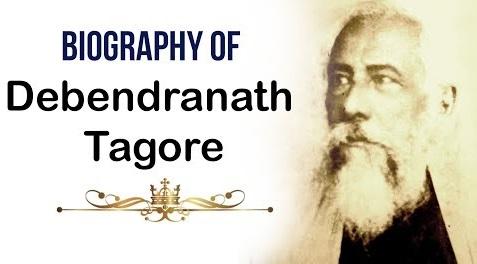Table of Contents
EARLY LIFE
- Debendranath Tagore was born on May 15, 1817, at Calcutta, Bengal, Bengal Presidency, to Prince Dwarkanath Tagore, a wealthy landowner and successful entrepreneur, and his wife, Digambari Devi.
- Debendranath Tagore was born to the Tagore family in Jorasanko, popularly known as Jorasanko Thakur Bari in North-western Kolkata, which was later converted into a campus of the Rabindra Bharati University. Debendranath married Sarada Devi (died 1875) and they together had 15 children EARLY LIFE
- After receiving his early education at home, he was enrolled at the Anglo-Hindu College in 1827. After attending the college for a brief period, he began supervising his family’s property and also showed interest in philosophy and religion.
- In 1838, his grandmother passed away and he experienced a psychological change in himself. He became deeply involved in religion and began reading the Mahabharata, Upanishads, and books on many other religious as well as philosophical subjects.
REFORMER
- As son of Dwarkanath Tagore, a close friend of Ram Mohan Roy, Debendranath came early into the influence of Brahmoism through the Brahmo Sabha.
- Upasana Griha, Prayer Hall, built by Debendranath Tagore in 1863, Santiniketan.He commenced a deep study of religious literature, particularly the Upanishads.
- In 1839, with tutelage from Pandit Ram Chandra Vidyabageesh, a leader of the Brahmo Sabha, he formed his own active Tattwabodhini Sabha (Truthseekers’ Association) to spread his new experiences and knowledge.
REFORMER
- In 1843, Debendranath started the Tattwabodhini Patrika as mouthpiece of the Tattwabodhini Sabha. In the same year, he revived the Brahma Sabha, fallen in vigour and following since the death of Ram Mohan Roy in 1833.
- The Brahmo Sabha was formally absorbed into the Tattwabodhini Sabha and renamed as Calcutta Brahma Samaj.
- In 1850, he published a book titled Brahmo Dharma enshrining the fundamental principles. REFORMER • With the influence of Brahmoism under Debendranath spreading far and wide throughout India, he gathered reputation as a person of particular spiritual accomplishment and came to be known as Maharshi.
- He also campaigned to promote universal primary education in India and established a Brahmo school. In 1863, he founded Shantiniketan, a retreat in rural Bengal, which was later transformed into an international university under the supervision of his youngest son, Rabindranath Tagore
PRINCIPLES
- In his work with the Brahmo Samaj he had two princples –
- 1) the Brahmo Samaj is a purely Hindu institution intended for Hindus and deals with the highest form of Hinduism .
- 2) its mission is chiefly religious rather than social. He was one of the first men in Bengal to open the doors of high education to women and indeed in his own family























 WhatsApp
WhatsApp